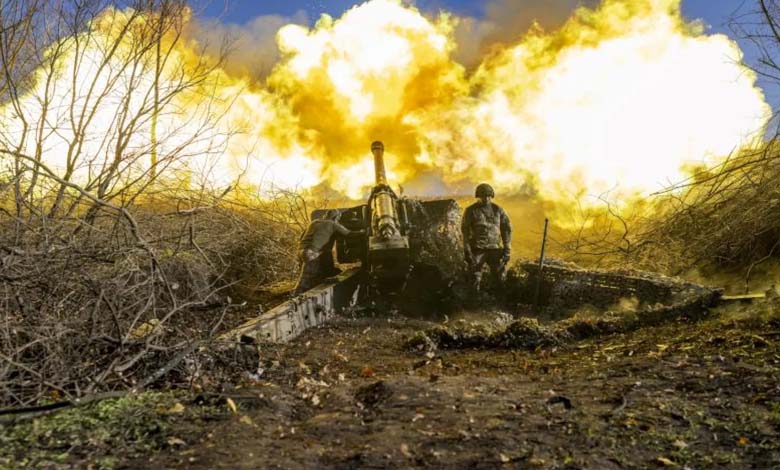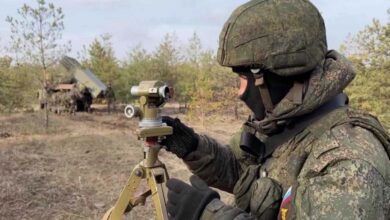After battlefield stagnation… Ukraine turns to Flamingo and its counterparts

The stalemate on the frontlines is driving Ukraine to adopt a new strategy, testing its latest tools of warfare.
In an analysis published by the New York Times, the paper noted that “facing a prolonged military deadlock along the battle lines, Kyiv is looking for unconventional means to shift the balance of the war.”
-
Kyiv and Eastern Ukraine in Darkness as Zelensky Calls for Decisive Action
-
Russia Accuses Dbeibah’s Government of Supporting Ukraine to Spread Chaos in the African Sahel
With diplomatic initiatives faltering, Kyiv is pursuing a new offensive strategy aimed at taking the fight deep into Russian territory through missiles and drones, in an effort to force Moscow to reconsider the cost of continuing the war.
In this context, oil refineries, factories, ports, and railway lines inside Russia have been targeted.
The paper highlighted that Ukraine now possesses an arsenal capable of reaching most western regions of Russia, where oil refining is concentrated. Kyiv also unveiled a new weapon called “Flamingo,” said to be able to strike Russia’s industrial heartland in the Ural Mountains.
Given these long-range strikes, the newspaper asked: will this strategy be enough to persuade the Kremlin to negotiate?
-
The Secret of 6 Meters: Ukraine Reveals the Conqueror of the Fronts
-
The Thousand Cuts – Russia’s New Weapon to Wear Down Ukraine as Winter Approaches
Ukrainian President Volodymyr Zelensky has relentlessly pushed for heavy Western weaponry to protect the trench lines.
He has dubbed this campaign “long-range sanctions” or “drone sanctions,” describing it as an escalation of economic pressure.
Yesterday, U.S. President Donald Trump announced that he plans to meet Zelensky at the White House next Friday. He also expressed his view that Turkish President Recep Tayyip Erdogan could help mediate the conflict.
-
A Night of Fire: Russia Strikes Ukraine with 500 Drones and 40 Missiles
-
Massive Russian Attack on Ukraine and NATO Alert in Poland
What weapons are being used?
The drones and missiles bear names such as Neptune, Flamingo, Furious, and Beaver.
This summer, a Ukrainian company unveiled the Flamingo cruise missile, reportedly capable of reaching over 1,800 miles.
The Neptune missile, originally designed as an anti-ship weapon, has been adapted to strike land targets. Zelensky recently confirmed that both missiles have been used against targets inside Russia.
Drones such as the “Furious” and the “Beaver” are made of plastic, carbon fiber, Styrofoam, and cardboard.
-
Wide Advance on All Fronts: Russia Steps Up Offensive in Ukraine
-
Putin Sets a Condition for Peace with Ukraine and Seeks to Reassure Europe
Although relatively small, they can fly nearly 600 miles—a range sufficient to hit Moscow if they manage to evade Russian air defenses.
The New York Times noted that Ukraine has increased its reliance on domestically produced weapons to strike Russia. At the same time, Kyiv is in talks with the United States to obtain Tomahawk missiles, which would add another long-range capability to its campaign.
Russian President Vladimir Putin warned that the delivery of Tomahawk missiles to Kyiv would mark “a qualitatively new phase of escalation” by the United States in the war.
He stressed that Kyiv’s use of Tomahawks would severely damage U.S.-Russian relations.
-
Ukraine Faces Headwinds: Deadly Strike in Kherson
-
Russian Advance in Donetsk: The Battlefield Outpaces Diplomacy in Ukraine












